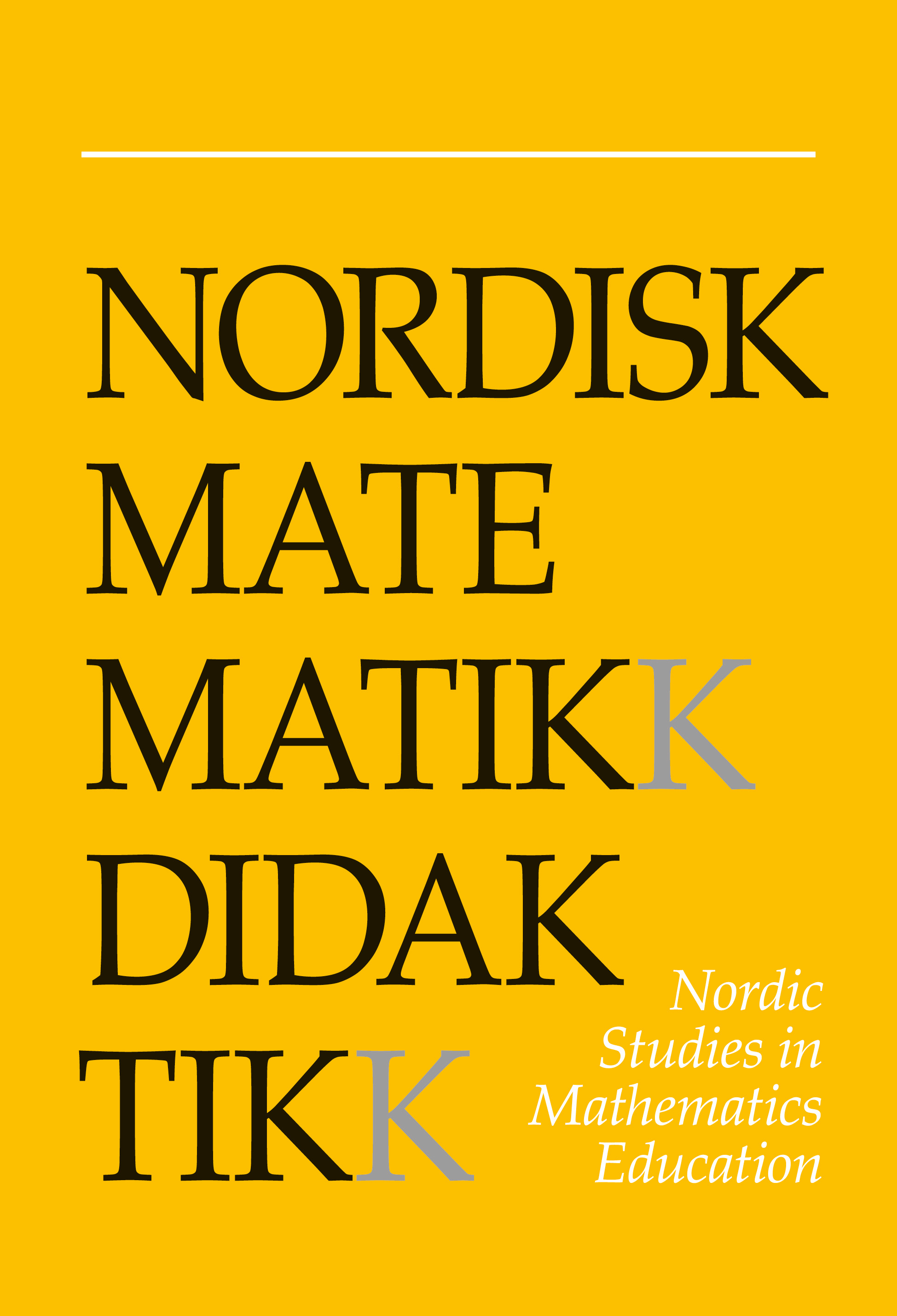Going across the grain: mathematical generalisations in a group of low attainers
DOI:
https://doi.org/10.7146/nomad.v8i1.146700Abstract
This paper is a report of a classroom research project whose initial aim was to find out how low attaining students in mathematics would respond to some cognitively challenging prompts usually reserved for higher attaining students. Analysis of classroom incidents revealed the power of a type of mathematical prompt, which can be generalised as "going across the grain of the work". The metaphors of working against and across the grain are also used to describe a particular perception of mathematical structure, the use of unfamiliar methods of interaction with students, and some unorthodox features of the research method. In this study it was found that deep mathematical structure could be encountered by looking across the grain of the work. This finding, although from a very small specific study, is rooted in the characteristics of mathematics. The importance of principles manifested in small classroom studies is discussed briefly.
References
Adhami, M., Johnson, D. & Shayer, M. (1998). Does CAME work? Summary report on phase 2 of the Cognitive Acceleration in Mathematics Education CAME, project. In Proceedings of the British Society for Research into Learning Mathematics Conference, 15 Nov. 1997 (pp.26-31). London: BSRLM.
Bills, L. & Rowland, T. (1999). Examples, Generalisation and Proof. In L. Brown (Ed.) Making Meaning in Mathematics: Visions of Mathematics 2, Advances in Mathematics Education 1 (pp.103-116). York: QED. https://doi.org/10.1080/14794809909461549
Boaler, J. (1997). Experiencing School Mathematics. Buckingham: Open University Press.
Dreyfus, T.(1991). Advanced Mathematical Thinking Processes. In D. Tall Advanced Mathematical Thinking.Dordrecht: Kluwer. https://doi.org/10.1017/CBO9781139013499.008
Feuerstein, R. (1980). Instrumental enrichment: an intervention program for cognitive modifiability Baltimore: University Park Press.
Hart, K. M. (1981) (Ed.) Children's understanding of mathematics: 11-16. London: John Murray.
Krutetskii, V. A. (1976) (translated J.Teller) in Kilpatrick, J. and Wirszup, I. (Eds.) The Psychology of Mathematical Abilities in School Children Chicago: University of Chicago Press. https://doi.org/10.2307/748528
Low Attainers in Mathematics Project (1987). Better Mathematics. London: HMSO.
Mason, J., Burton L. & Stacey K. (1982). Thinking Mathematically. London: Addison Wesley.
Reimann P. & Schult, T. (1996). Turning Examples Into Cases: acquiring knowledge structures for analogical problem-solving. Educational Psychologist, 31(2), 123-140. https://doi.org/10.1207/s15326985ep3102_4
Romberg, T.A. (1993). How One Comes to Know. In M. Niss (Ed.) Investigations into Assessment in Mathematics Education. Dordecht: Kluwer.
Schoenfeld, A. (1985). Mathematical Problem Solving. San Diego: Academic Press.
Trickett, L. and Sulke, F. (1988) Low attainers can do mathematics. In D. Pimm (Ed.) Mathematics, Teachers and Children (pp.109-117). London: Hodder and Stoughton.
Valero, P. & Vithal, R. (1998). Research methods of the «north» revisited from the «south». In A. Olivier & K. Newstead (Eds.) Proceedings of the 22nd Conference of the International Group for the Psychology of Mathematics Education (pp. 4-153 - 4-160). Stellenbosch: University of Stellenbosch.
Watson, A. (1999). Getting behind pupils' written test performances: what they did; what they thought they did; what they could have done. In L. Bills and T. Harries (Eds.) Proceedings of the Fourth British Congress of Mathematics Education. (pp. 153-158) Northampton: University College.
Watson, A. & Mason, J. (1998). Questions and Prompts for Mathematical Thinking. Derby: Association of Teachers of Mathematics.
Downloads
Published
How to Cite
Issue
Section
License

This work is licensed under a Creative Commons Attribution-NonCommercial-ShareAlike 4.0 International License.



